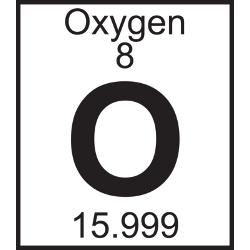How would you calculate the mass (in ng) of #2.33 xx 10^20 #atoms of oxygen?
1 Answer
Explanation:
The first thing to do here is to determine the mass in grams of
To do that, use Avogadro's number to convert the number of atoms to moles, the molar mass of oxygen to convert the moles to grams.
So, Avogadro's number, which acts as the definition of a mole, tells you that in order to have one mole of oxygen, you need to have
In your case, the sample will be equivalent to
#2.33 * 10^(20) color(red)(cancel(color(black)("atoms of O"))) * "1 mole O"/(6.022 * 10^(23)color(red)(cancel(color(black)("atoms of O"))))#
#= 3.869 * 10^(-4)"moles O"#
Now, oxygen has a molar mass of
This means that your sample will have a mass of
#3.869 * 10^(-4) color(red)(cancel(color(black)("moles O"))) * "15.9994 g"/(1color(red)(cancel(color(black)("mole O"))))#
#= 6.190 * 10^(-3)"g"#
Finally, you can convert the mass from grams to nanograms by using the conversion factor
#color(purple)(|bar(ul(color(white)(a/a)color(black)("1 g" = 10^(9)"ng")color(white)(a/a)|)))#
You will end up with
#6.190 * 10^(-3) color(red)(cancel(color(black)("g"))) * (10^(9)"ng")/(1color(red)(cancel(color(black)("g")))) = color(green)(|bar(ul(color(white)(a/a)color(black)(6.19 * 10^6"ng")color(white)(a/a)|)))#
The answer is rounded to three sig figs.


